Target-date funds have become a staple in retirement planning due to their straightforward, almost automatic investment approach. These funds simplify the investment process by basing asset allocation on one key factor: your anticipated retirement year. This “set it and forget it” strategy appeals to many investors looking for ease and convenience in their retirement investments.
Over the years, Charles Schwab has established itself as a client-centric broker, prioritizing low costs and accessibility. Schwab was a pioneer in democratizing the investment landscape, making financial markets accessible to a wider audience. This commitment extends to retirement planning, where Schwab has become a significant player through its range of Schwab target-date funds, designed to cater to various retirement timelines.
Today, I’m going to introduce you to target-date funds, then I’ll take a look at Schwab’s two lines of target-date funds to see how they might fit into a retirement plan.
Table of Contents
What Is a Target-Date Fund?

Target-date funds are a type of mutual fund that has become popular in retirement planning over the past two decades. They go by different names, interchangeably called several things, including:
— lifecycle funds
— age-based funds
— dynamic-risk funds
But the concept at the core is simple: Target-date funds invest in a more aggressive portfolio of mostly equity funds to start, then gradually shift to a more conservative portfolio of mostly bond funds as they approach a target retirement date.
The target retirement dates are intended to be estimates; they don’t have to be super precise. Generally, most mutual fund families will create target-date funds in five-year increments (say, 2025, 2030, 2035, etc.).
For the investor, the math here is simple enough.
Target-Date Funds Example

Let’s say you’re 30 years old in 2024, and that you expect to work until age 70. Your expected retirement date would be in the year 2064. So, investing in a target-date fund with a target retirement date of 2060 or 2065 (or even a combination of the two) would make sense.
What if your expected retirement age changes? No problem! Target-date funds are normal mutual funds and can be bought or sold as your needs change.
Note that the target-date fund’s allocation to stocks will generally never go to zero. Retirees need growth too, and most should maintain at least a little exposure to the stock market. The beauty of the target-date fund is that it changes your asset allocation to match your risk tolerance as you age—and it does it automatically without requiring you to actually do anything.
What Is Asset Allocation?
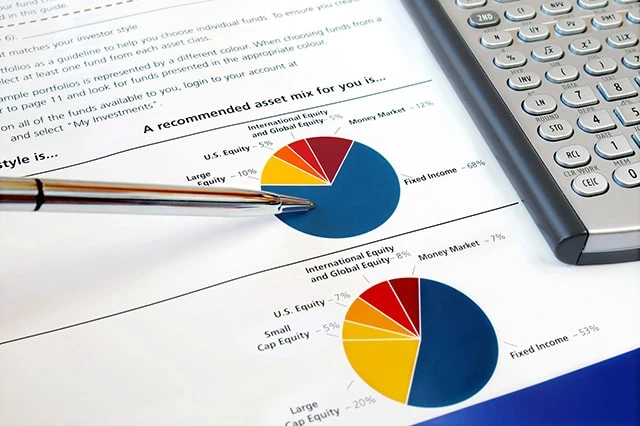
A lot of investors (and particularly young investors) dream of making a killing picking stocks. And that’s fantastic. Stock picking is stimulating and, if done well, can add some zeros to your net worth!
When push comes to shove, however, your asset allocation strategy is far more important than individual stock picking when it comes to meeting your financial goals. Asset allocation sits at the core of target-date funds and, really, at the core of all financial planning.
Related: IRA Contribution Limits for 2024 [Save More in 2024]
But what exactly is asset allocation?
Every planner has their own take, but the basic idea is simple. You diversify your portfolio across different asset classes (stocks and bonds, for instance) that, ideally, move at least somewhat independently of each other. A typical asset allocation will include:
— stocks (or stock mutual funds)
— fixed-income investments (bonds, bond funds, or money market funds)
— cash
— alternative assets such as gold, commodities, or real estate
You arrange the parts so that the overall portfolio has a risk and return profile that makes sense for you. And (importantly!) you rebalance the portfolio when the weights to each asset start to divert from your plan.
Asset Allocation Example

Let’s say your ideal asset allocation had you 50% allocated to stocks and 50% allocated to fixed income.
First, let’s say the stock market crashes. Your stock weighting has suddenly dropped to just 35%, and your fixed-income investments have jumped to 65% of your portfolio’s worth! You need to rebalance your portfolio to get back to 50/50. You would do that by selling off some of the fixed-income investments and buying some stock.
Related: 401(k) Contribution Limits for 2024 and 2025 [Save More]
Now, let’s say instead that the stock market shoots higher, and you find yourself allocated 60% to stocks and 40% to fixed-income investments. If you wanted to rebalance back to 50/50, you would sell some of your stocks and buy new fixed-income investments.
The idea here is to constantly reduce risk and smooth out your returns by buying low and selling high.
Asset allocation within a target-date fund takes it a step further. Apart from regular rebalancing due to market moves, the target-date fund’s asset allocation decisions involve gradually reducing the risk (buying fewer and less risky stocks, and buying more bonds) as the fund gets closer to its target retirement date and its final asset allocation.
Related: The 7 Best Vanguard Index Funds for Beginners
A Look at Schwab Target-Date Funds
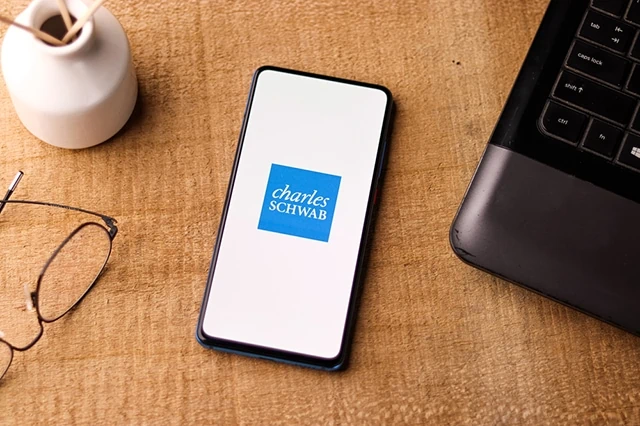
Charles Schwab became a household name by offering basic and affordable brokerage services to ordinary people. Schwab was the first real mass-market discount broker and a major trailblazer in lowering trading costs for investors.
Schwab has applied that same focus on the client to its suite of low-cost mutual funds managed in house by Charles Schwab Investment Management. And Schwab target-date funds are an integral part of that offering.
Schwab breaks its offerings into two categories: Schwab Target Funds and Schwab Target-Date Funds. I’ll introduce you to each line and go through a few examples of each.
Related: Best Schwab Retirement Funds for a 401(k) Plan
Schwab Target Funds

Schwab Target Funds currently range in five-year increments from 2010 to 2065, with new iterations added over time. And on the equity and fixed income securities subject (asset allocation), it’s exactly what you might expect. Each target-date fund holds a mixture of stock mutual funds and fixed income mutual funds, with the percentage allocated to stocks gradually getting higher the further out the targeted retirement date is.
The idea is, the closer the retiree gets to retirement, the more the funds are designed to deliver income consistent with what the retiree needs to live in their post-salary years.
(Note: Most of the mutual funds owned by Schwab target-date mutual funds and stock and bond funds managed by Schwab internally, but certainly not all. Schwab will also regularly incorporate outside managers.)
Let’s compare a handful of the funds.
Related: Best Schwab Retirement Funds for an IRA
Schwab Target 2025 Fund (SWHRX)

The Schwab Target 2025 Fund (SWHRX) is designed for an investor who is on the cusp of retirement.
About half of fund assets are invested in fixed income and cash, with the Schwab US Aggregate Bond Index Fund (SWAGX) being the single largest holding at about 19%. This is largely what’s providing your income. The other half is invested in stocks with a concentration in domestic large caps, which is largely what’s going to provide capital appreciation. The Schwab S&P 500 Index Fund (SWPPX) is second-largest among underlying investments, at just under 16% of assets.
Related: The 7 Best Fidelity Index Funds for Beginners
A roughly 50/50 split between stocks and bonds is a fairly aggressive portfolio for a person starting retirement. The old financial planning rule of thumb was that your allocation to stocks should be roughly 100 minus your age. So, assuming you retired at the age of 65, a 35% to stocks would be “about right.” (But note that rules of thumb are not ironclad laws; some financial planners recommend a more aggressive 120 minus your age as their standard.)
Schwab Target 2045 Fund (SWMRX)

The Schwab Target 2045 Fund (SWMRX) would be appropriate for a person in mid-career, in their early to mid-40s.
Related: How Much to Save for Retirement by Age Group [Get on Track]
As you might expect, this target-date fund is more aggressive. About 86% of its portfolio is invested in stocks, including a 30%-plus allocation in foreign stocks, which are generally considered to be more aggressive for American investors. Its largest position, at 20%, is the Schwab S&P 500 Index Fund, followed by the Schwab International Opportunities Fund (SWMIX) at 12%.
Again, an 86% allocation to stocks is aggressive at this age. That’s not necessarily a deal breaker, of course. Looking back, over a 20- to 30-year window, that aggressiveness has generally paid off. But you should make sure that you’re comfortable with an aggressive allocation if you’ve already managed to amass a sizable nest egg.
Like Young and the Invested’s Content? Be sure to follow us.
Schwab Target 2065 Fund (SWQRX)

And finally, let’s take a look at the Schwab Target 2065 Fund (SWQRX).
This is designed for that recent college graduate looking to kickstart their retirement savings. The allocation is aggressive, with fully 95% of the fund invested in stocks. Apart from the usual high allocation to the Schwab S&P 500 Index Fund (20%), SWQRX also has large exposure to developed international and emerging markets. And while funds dedicated to specific sector equity securities are a rarity in target-date funds, Schwab’s target-date line includes holdings in Schwab Global Real Estate (SWASX)—roughly 6% of SWQRX’s assets (that allocation is smaller in Schwab Target Funds that are closer to their target date).
Related: Retirement Plan Contribution Limits and Deadlines for 2023
A worker just starting their career will generally not have a lot of money to invest. So, averaging into an aggressive target-date fund like this is generally appropriate. With four decades or more until retirement, you can afford to take risk, as you have plenty of time to make up losses. And given the modest sums you’re likely investing to get started, you’re not putting a substantial nest egg at risk.
Related: 7 Best Stock Recommendation Services [Stock Tips + Picks]
Schwab Target Index Funds
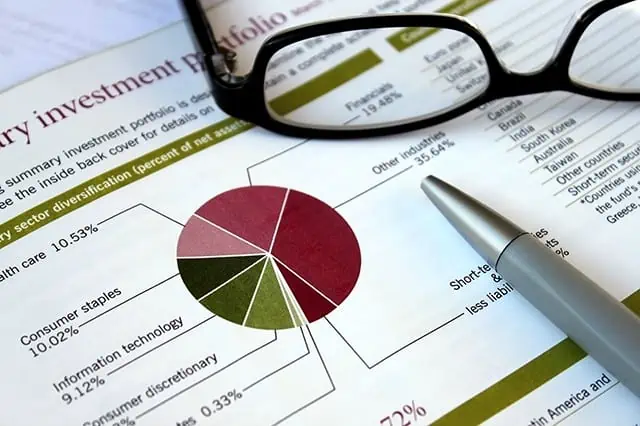
The difference between Schwab Target Funds and Schwab Target Index Funds isn’t quite what it seems. Both series of target-date funds are actively managed—that is, human managers determine the blend of holdings in each and every one of these mutual funds.
However, Schwab Target Funds hold a mix of actively managed and index mutual funds (index funds try to replicate a rules-based index, like the S&P 500). But Schwab Target Index Funds get all of their stock and bond exposure exclusively from index exchange-traded funds (ETFs).
If you value low cost above all else, Schwab Target Index Funds are the better option. Because they invest solely in low-cost Schwab ETFs, these target-date funds have some of the lowest expense ratios in the business, at just 0.08%.
Related: The 7 Best Vanguard ETFs for 2024 [Build a Low-Cost Portfolio]
Let’s take a look at the three Schwab Target Index Funds that match the retirement dates of the Schwab Target Funds above.
Like Young and the Invested’s Content? Be sure to follow us.
Schwab Target 2025 Index Fund (SWYDX)
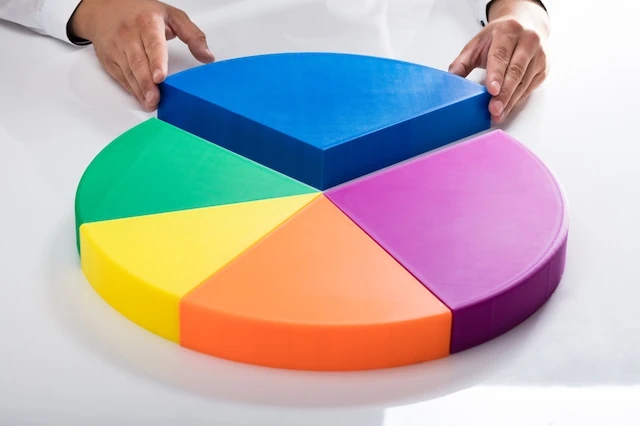
The Schwab Target 2025 Index Fund (SWYDX) is allocated very similarly to the Schwab Target 2025 Fund (SWHRX), with its asset allocation split about 50/50 between stocks and fixed income. Right now, 38% of the portfolio is invested in the Schwab US Aggregate Bond ETF (SCHX) with another 32% allocated to the Schwab US Large Cap ETF (SCHX).
Schwab Target 2045 Index Fund (SWYHX)
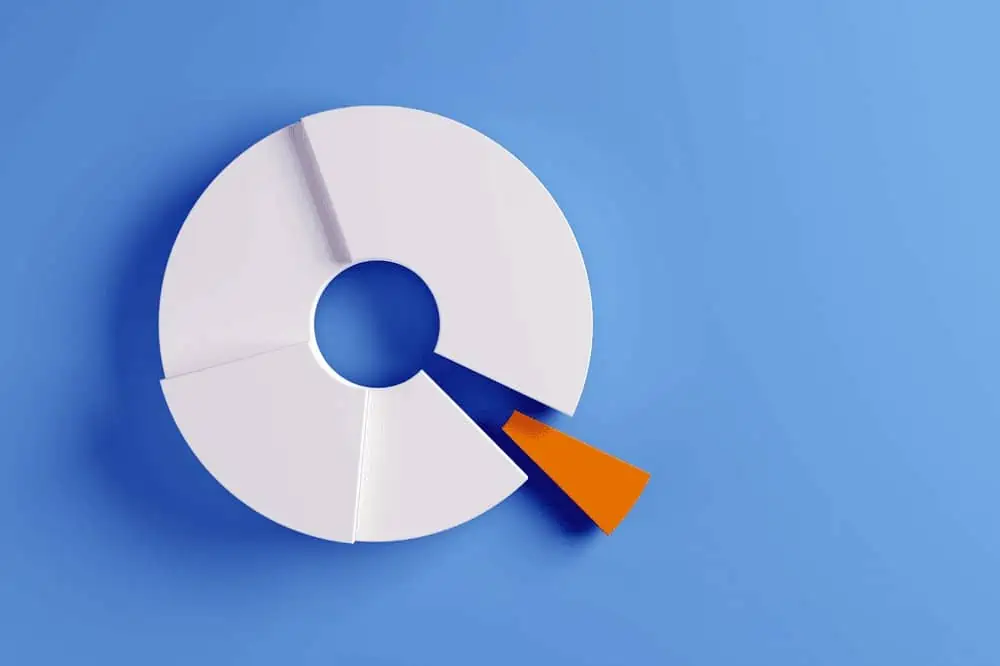
The Schwab Target 2045 Index Fund (SWYHX) is more aggressive, allocated about 88% to stocks. Nearly half of the portfolio is allocated to the Schwab US Large Cap ETF (SCHX) alone.
A large allocation to large caps also means a large allocation to technology stocks, which make up a little more than 20% of the portfolio. That’s not necessarily a bad thing, of course, as U.S. tech has been a major engine of growth over the past 20 years. But tech shares are also notoriously volatile.
Schwab Target 2065 Index Fund (SWYOX)

And finally, let’s look at the Schwab Target 2065 Index Fund (SWYOX). At 97% invested in stocks, this is about as aggressive as you can get. As was the case with the Schwab Target 2065 Fund, SWYOX also has a healthy allocation to developed and emerging markets.
Related: The 7 Best Dividend ETFs [Get Income + Diversify]
Learn More About These and Other Funds With Morningstar Investor

If you’re buying a fund you plan on holding for years (if not forever), you want to know you’re making the right selection. And Morningstar Investor can help you do that.
Morningstar Investor provides a wealth of information and comparable data points about mutual funds and ETFs—fees, risk, portfolio composition, performance, distributions, and more. Morningstar experts also provide detailed explanations and analysis of many of the funds the site covers.
With Morningstar Investor, you’ll enjoy a wealth of features, including Morningstar Portfolio X-Ray®, stock and fund watchlists, news and commentary, screeners, and more. And you can try it before you buy it. Right now, Morningstar Investor is offering a free seven-day trial. You can check out the current deal, as well as discounted rates for students and teachers, by visiting the Morningstar Investor website.
How Do Schwab Target-Date Funds Compare to Those From Fidelity, Vanguard, and Others?

As a general rule, your experience with Schwab Target Funds is going to be very similar to what you would get in target-date mutual funds managed by other fund sponsors like Fidelity or Vanguard. Most offer low-cost access to an asset allocation model that glides from more aggressive to more conservative as you reach your targeted retirement date.
But there can be differences, and those differences matter.
Let’s compare the Schwab Target 2040 Index Fund (SWYGX) to the Fidelity Freedom Index 2040 Fund (FBIFX) and the Vanguard Target Retirement 2040 Fund (VFORX). All have rock-bottom expense ratios of 0.08%, 0.12% and 0.08%, respectively. That’s close enough that fees alone aren’t going to move the needle much in terms of returns.
But the asset allocations can be noticeably different.
— SWYGX: 81% stocks (57% U.S. stocks, 24% foreign stocks), 19% in fixed income and cash
— FBIFX: 86% stocks (52% U.S. stocks, 34% foreign stocks), 14% in fixed income and cash
— VFORX: 76% stocks (46% in U.S. stocks, 30% foreign stocks), 24% in fixed income and cash
In this example, the Fidelity target-date fund has a significantly more aggressive current asset allocation than the Schwab or Vanguard target-date funds. That’s neither good nor bad. But you should consider the relative aggressiveness based on your own investment objectives when choosing among the target-date funds.
Should I Always Buy the Target-Date Fund That Corresponds Most Closely to My Estimated Retirement Year?

In a word, no. Or at least not necessarily.
Target-date mutual funds are designed to make the asset allocation process simple. And they do. But this simplicity is made possible by making assumptions about your investment objectives and risk tolerance based on only one real factor: your age.
Related: The 7 Best T. Rowe Price Funds to Buy and Hold
You might be significantly more aggressive or conservative than your age would suggest for any number of reasons. Perhaps you have a guaranteed inheritance that gives you the flexibility to be more aggressive. Or perhaps you have immediate cash needs or a sick family member that requires you to be more conservative.
As a very general rule, target-date mutual funds give you a great starting point. But you should always consider your overall financial situation and use the target funds in that context.
Are Indexed Target-Date Funds Better Than Actively Managed Funds?

This is an eternal debate, and the answer is: “It depends.”
Some active managers effectively beat their indexed competition even after the higher fees, trading expenses and tax considerations are taken into account. Most, however, do not. Over the past two decades, there have been only three years—2005, 2007, and 2009—in which a majority of large-cap managers beat the S&P 500. So, as a general rule, it is safe to assume that indexed target-date funds will be your better option over time.
Furthermore, active management can muddle the waters of a target date strategy, particularly if the active manager regularly makes defensive moves, such as going to cash. The percentage of the portfolio you have exposed to stocks is determined by the number of years until the retirement date, and active management can potentially skew your weights outside of the target.
Related: 10 Best Vanguard Funds for the Everyday Investor
Related: 12 Best Long-Term Stocks to Buy and Hold Forever

As even novice investors probably know, funds—whether they’re mutual funds or exchange-traded funds (ETFs)—are the simplest and easiest ways to invest in the stock market. But the best long-term stocks also offer many investors a way to stay “invested” intellectually—by following companies they believe in. They also provide investors with the potential for outperformance.
So if you’re looking for a starting point for your own portfolio, look no further. Check out our list of the best long-term stocks for buy-and-hold investors.
Related: The Best Fidelity ETFs for 2024 [Invest Tactically]
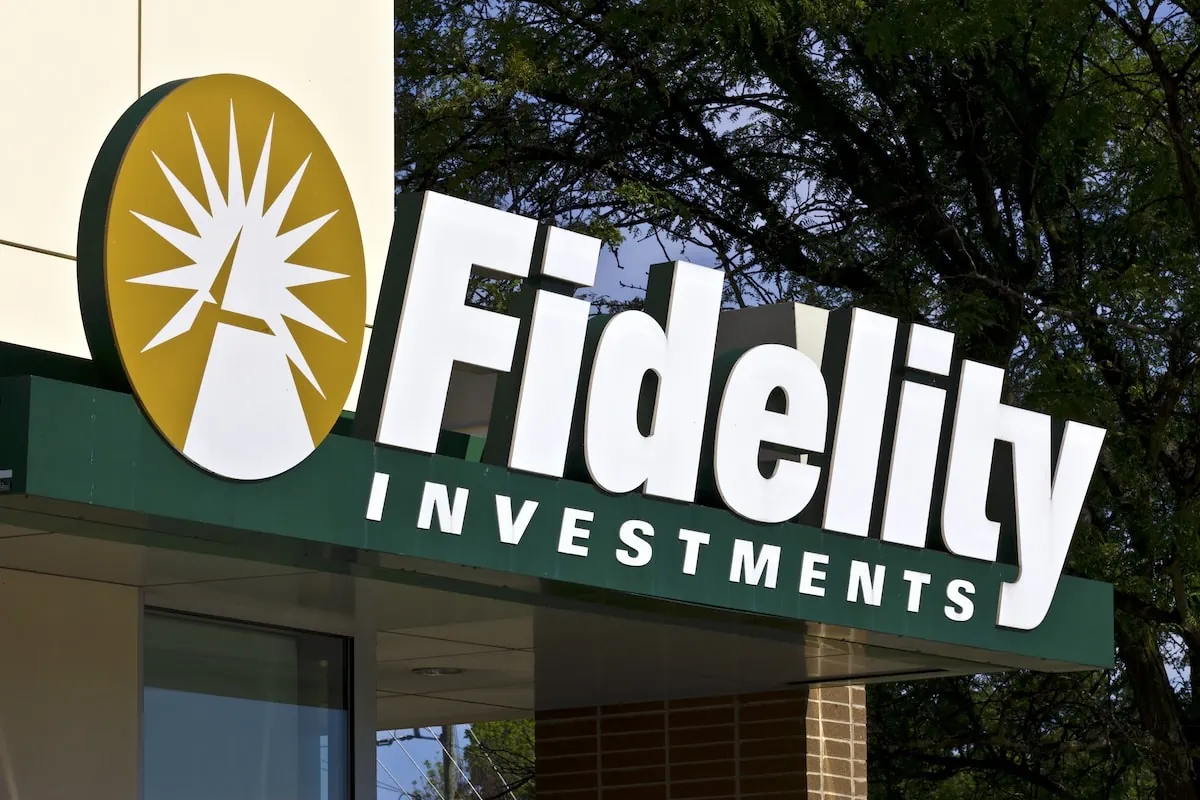
If you’re looking to build a diversified, low-cost portfolio of funds, Fidelity’s got a great lineup of ETFs that you need to see.
In addition to the greatest hits offered by most fund providers (e.g., S&P 500 index fund, total market index funds, and the like), they also offer specific funds that cover very niche investment ideas you might want to explore.
Related: 9 Best Monthly Dividend Stocks for Frequent, Regular Income

The vast majority of American dividend stocks pay regular, reliable payouts—and they do so at a more frequent clip (quarterly) than dividend stocks in most other countries (typically every six months or year).
Still, if you’ve ever thought to yourself, “it’d sure be nice to collect these dividends more often,” you don’t have to look far. While they’re not terribly common, American exchanges boast dozens of monthly dividend stocks.
Please Don’t Forget to Like, Follow and Comment

Did you find this article helpful? We’d love to hear your thoughts! Leave a comment with the box on the left-hand side of the screen and share your thoughts.
Also, do you want to stay up-to-date on our latest content?
1. Follow us by clicking the [+ Follow] button above,
2. Subscribe to The Weekend Tea, our weekly newsletter to read more about investing, spending, taxes, and more, and
3. Give the article a Thumbs Up on the top-left side of the screen.
4. And lastly, if you think this information would benefit your friends and family, don’t hesitate to share it with them!





